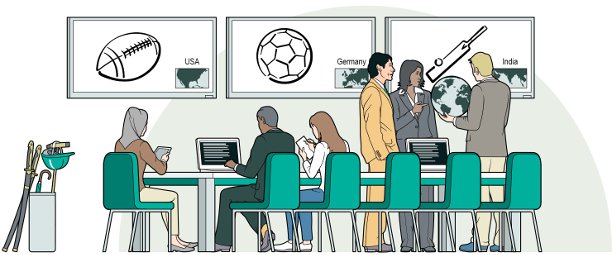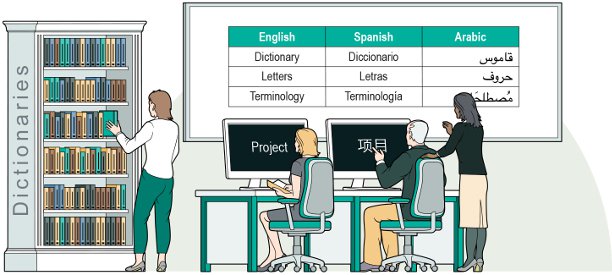Audio/Video Localization EHSAAS RASHAN PROGRAM GPI offers comprehensive multimedia translation services. With recording and production capabilities in a variety of languages, GPI helps clients who require multilingual presentations, training and e-learning content, product and service demos, games, corporate promotional videos or any combination of text, audio and video content localized into different languages. GPI can work with end clients and/or interactive agencies that produce English-language multimedia and supply full recording, editing and production services, or just script translation and native speaking voice talent for Audio/Video Localization EHSAAS RASHAN PROGRAM.
Introduction to Audio/Video Localization
Audio/Video Localization refers to the process of adapting multimedia content such as videos, films, advertisements, and audio recordings to suit the linguistic, cultural, and technical requirements of a target audience in different regions or countries. This specialized form of localization goes beyond mere translation of text; it involves adjusting audio tracks, subtitles, graphics, and even cultural references to ensure the content resonates with local viewers or listeners. In today’s globalized world, Audio/Video Localization plays a crucial role in reaching diverse audiences effectively.
Key Components of Audio/Video Localization
1.Translation and Adaptation
– *Translation**: Converting spoken dialogue, narration, or on-screen text from the source language into the target language while retaining the original meaning and context.
– **Adaptation**: Modifying cultural references, idiomatic expressions, and humor to align with the local culture and sensibilities of the target audience.
2. **Dubbing vs. Subtitling**
– **Dubbing**: Replacing the original audio with a translated version spoken by voice actors in the target language. Lip-syncing and matching vocal tone to the original actors’ performance are crucial in maintaining authenticity.
– **Subtitling**: Adding text at the bottom of the screen to translate spoken dialogue while preserving the original audio. Subtitles must be concise, timed accurately, and culturally relevant for effective communication.
3. **Voice-over Narration**
– **Voice-over**: Recording a translated script over the original audio, typically used in documentaries, educational videos, and corporate presentations to convey information while allowing viewers to hear the original speakers in the background.
Challenges in Audio/Video Localization
1. **Cultural Nuances and Sensitivities**
– Adapting humor, slang, and references that may not resonate with the target audience can lead to misinterpretation or offense.
2. **Technical Considerations**
– Ensuring audio quality, lip-sync accuracy in dubbing, and subtitle readability require technical expertise and specialized software tools.
3. **Time and Cost Constraints**
– Tight deadlines and budget limitations often impact the quality and thoroughness of the localization process.
Importance of Audio/Video Localization in Global Markets
1. **Market Expansion and Audience Engagement**
– Localizing audio/video content enhances accessibility and engagement among diverse demographics, fostering brand loyalty and market penetration.
2. **Compliance and Legal Requirements**
– Meeting regulatory standards and language laws in various countries ensures legal compliance and avoids potential fines or penalties.
*3. **Enhanced User Experience*
– Providing content in the native language of the audience improves comprehension and user satisfaction, leading to higher viewer retention and engagement rates.
Best Practices in Audio/Video Localization
1. **Early Planning and Preparation**
– Integrating localization considerations into the content creation process minimizes rework and accelerates time-to-market.
2. **Quality Assurance and Testing**
– Conducting thorough linguistic and technical reviews, as well as user testing, ensures the accuracy and effectiveness of localized content.
3. **Collaboration and Expertise**
– Working with experienced translators, voice actors, and localization specialists facilitates seamless adaptation and maintains the integrity of the original content.
Future Trends in Audio/Video Localization
**AI and Automation**
– Machine learning and AI technologies are increasingly used for speech recognition, translation, and subtitling, streamlining the localization process and improving efficiency Audio/Video Localization EHSAAS RASHAN PROGRAM.
2. **Personalization and Interactivity**
– Interactive video content and personalized viewing experiences cater to individual preferences and cultural differences, enhancing user engagement and retention.
3. **Virtual Reality and Augmented Reality**
– Localizing immersive multimedia experiences requires adapting spatial audio, subtitles, and interactive elements to create authentic and engaging virtual environment Audio/Video Localization EHSAAS RASHAN PROGRAM.
Conclusion
In conclusion, Audio/Video Localization is a multifaceted discipline essential for effectively communicating with global audiences in their native languages and cultural contexts. By employing best practices, leveraging technological advancements, and understanding market dynamics, organizations can successfully localize their multimedia content and achieve broader reach, cultural resonance, and sustained audience engagement in diverse international markets. As technology continues to evolve, the landscape of Audio/Video Localization will undoubtedly expand, offering new opportunities and challenges for content creators, localization professionals, and global brands alike Audio/Video Localization EHSAAS RASHAN PROGRAM.
“Audio/Video Localization EHSAAS RASHAN PROGRAM”



